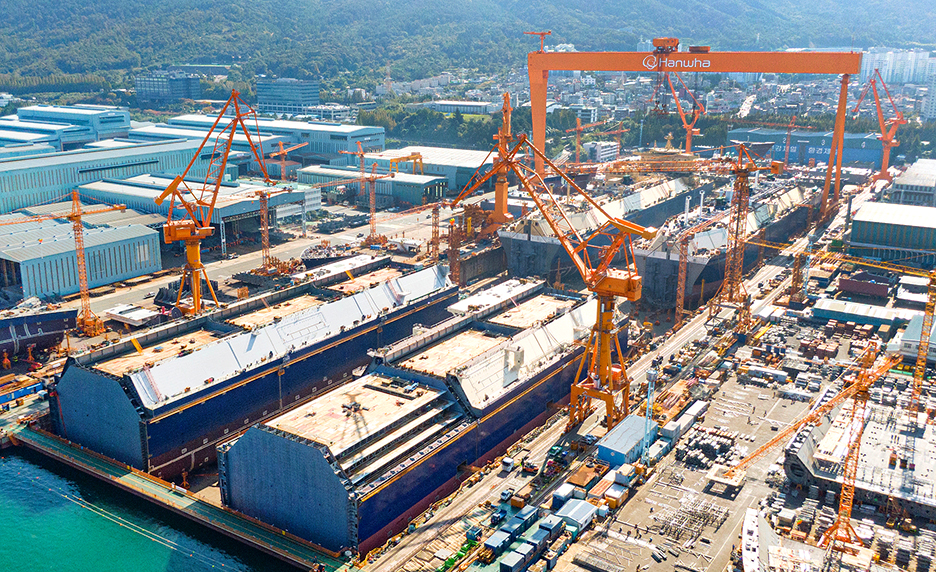South Korean shipbuilder Hanwha Ocean, previously known as DSME, has signed a memorandum of agreement to build 12 liquefied natural gas (LNG) carriers as part of QatarEnergy’s massive shipbuilding program.
Hanwha Ocean said in a stock exchange filling it had signed the deal on February 29 with a company from the Middle East, without revealing the name of the firm.
Shipbuilding sources said that this deal is most likely related to the massive QatarEnergy program.
Hanwha Ocean did not reveal any other information regarding the deal.
The shipbuilder said that it is currently reviewing the details of the contract.
Hanwha Ocean added that it will make an announcement when the details are finalized.
Last year, Hanwha Ocean won orders for five LNG carriers. Prior to that, the shipbuilder secured orders for 38 LNG carriers, setting a record for the largest number of orders for LNG carriers in a year since its establishment.
Giant Qatari LNG expansion
State-owned LNG giant QatarEnergy previously entered into deals with Hudong-Zhonghua and South Korea’s three shipbuilders to reserve LNG shipbuilding slots for its giant shipbuilding program which includes the construction of more than 100 vessels.
After that, QatarEnergy signed in 2022 a series of time charter deals for the long-term charter and operation of 60 conventional-size LNG ships, concluding the first phase of its program.
The vessels will be built at South Korea’s three shipbuilders HD HHI, SHI, and Hanwha Ocean, and Hudong-Zhonghua.
QatarEnergy kicked off the second stage of the program last year with a deal for 17 LNG carriers worth about $3.9 billion with HD Hyundai Heavy.
SHI also recently secured a large order to build 15 LNG carriers for about $3.45 billion, while QatarEnergy selected compatriot shipping firm Nakilat to be the owner and operator of up to 25 conventional-size LNG carriers as part of the second phase of the program.
The LNG carriers booked at Hyundai Heavy and SHI under the second stage are worth about $229-230 million per vessel.
These means that the Hanwha Ocean deal for 12 LNG carriers could be worth about $2.76 billion.
Besides these 174,000-cbm carriers, LNG Prime previously reported that QatarEnergy signed a deal with China’s Hudong-Zhonghua for 8 271,000-cbm vessels.
QatarEnergy is also said to be looking to order 10 more Q-Max LNG carriers in China.
QatarEnergy’s shipbuilding program aims to support and meet future requirements of its North Field East and North Field South expansion projects which will increase Qatar’s production to 126 mtpa, as well as the Golden Pass LNG project in the US.
The company also recently announced the third North Field expansion phase to boost Qatar’s capacity to 142 mtpa.

